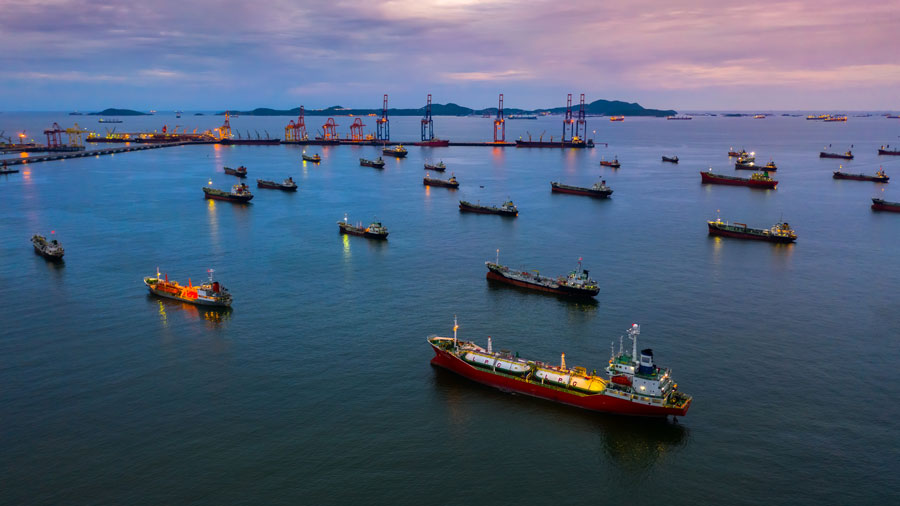The EU ETS was constituted in 2005 as the world’s first trading scheme on emission rights. It is the cornerstone for reducing greenhouse gas emissions on the continent and currently represents almost 80% of international carbon trade. In other words, it is the world’s biggest greenhouse gas emissions market.
It encompasses specific gases and markets in which emissions can be precisely calculated, such as electricity and heating generation or sectors with intensive energy use, such as refineries, iron & steel, the production of cement, glass, paper and chemical products, among other industries.
Historically, maritime transport was not included in the EU ETS, but the legislative project published on 14 July 2021 as part of the European Green Deal finally included maritime emissions in the scheme.
How the emissions market works
The EU ETS system follows a cap-and-trade approach. A cap is set on total emission rights and these are distributed between the participants in the shape of emissions allowances or auctions where they can trade with one another. This means that organisations have the right to emit a certain amount of greenhouse gases and, if they need to emit more, they can buy rights from other entities who have not needed to spend their assigned allowance.
At the end of each year, the companies must have or have acquired enough allowances to cover all of their emissions; otherwise they will be heavily sanctioned.
Draft agreement on contribution to decarbonisation
The European maritime sector has come to a preliminary agreement on the maritime EU ETS under which its income will go towards decarbonisation. This was a major petition of maritime sector associations, which have succeeded in making the European Parliament and Council include their demands in a draft.
It refers to at least 20 million EU ETS credits, the equivalent of 1.5 billion euros at the current carbon price, which will be allotted to maritime projects under the Innovation Fund. This agreement is pending ratification as a global agreement, something which is expected to take place in late December.
According to Sotiris Raptis, Secretary General of the European Community Shipowners’ Associations, ECSA, setting aside part of the ETS revenues for maritime is a victory for the decarbonisation of the sector, given that this mechanism for assigning resources is essential to reach the ambitious targets set by the European Green Deal and the Fit-for-55 package. The shipowners point out that the agreement is key to bridging the price gap with clean fuels, improving the energy efficiency of ships and building the infrastructure in ports.
Jim Corbett, the World Shipping Council’s Environmental Director for Europe, underlined the importance of the investment for the sector’s green transition. “We hope that the EU ETS for maritime will help drive investment in renewable energy as well as in the supply networks needed for the alternative maritime fuels necessary to make the transition”, he said.



Comments are closed.